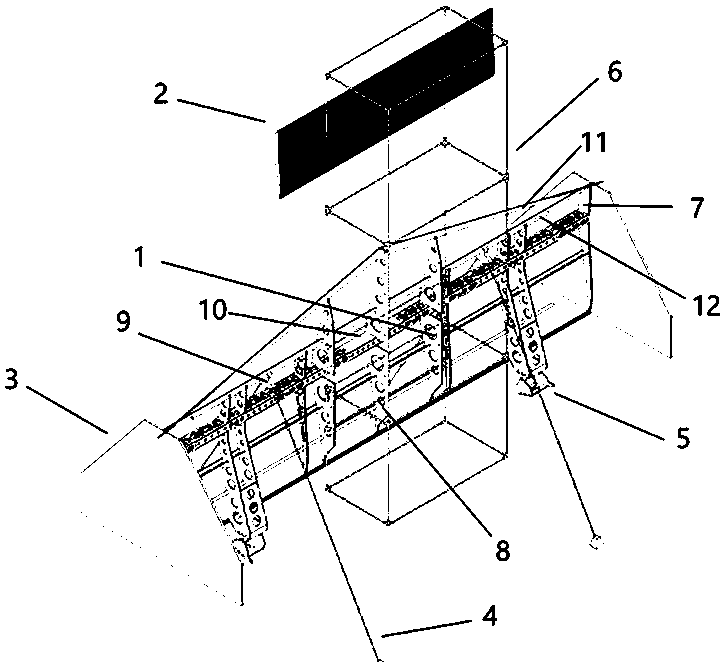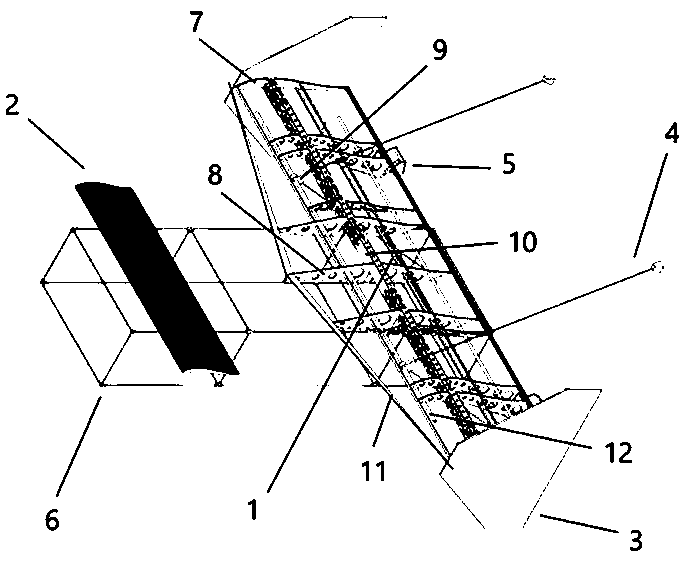Tailstock type vector differential biaxial aircraft
A technology of axis aircraft and vector difference, applied in the field of tailstock vector differential two-axis aircraft, can solve the problems of inability to meet low-speed flight, low flight speed, flight instability, etc., and achieve the effect of satisfying fast and small angle of attack flight
- Summary
- Abstract
- Description
- Claims
- Application Information
AI Technical Summary
Problems solved by technology
Method used
Image
Examples
Embodiment Construction
[0035] Below in conjunction with accompanying drawing, the present invention will be further described
[0036] The present invention will be further described below in conjunction with accompanying drawing.
[0037] Such as Figure 1 to Figure 5 As shown, the numbers in the figure represent the main structural components of the aircraft. 1: Main wing; 2: Canard; 3: Stabilizer; 4: Foot support; 5: Vector motor seat; 6: Loading frame; 7: Outer s-shaped small rib; 8: Middle large rib (based on s modification of wing rib); 9: 3D printing; 10: main beam; 11: carbon leading edge; 12: front sub-beam.
[0038] The invention mainly includes a main wing 1, a vector motor base 5, a canard 2, a loading frame 6, a foot support 4 and an arduino-based mwc flight controller.
[0039] The main wing is a swept wing with an aspect ratio of 3.48 (sweep angle 79 degrees), providing the main lift. The canard is located at the front end of the main wing, which can increase the overall stall ang...
PUM
 Login to View More
Login to View More Abstract
Description
Claims
Application Information
 Login to View More
Login to View More - Generate Ideas
- Intellectual Property
- Life Sciences
- Materials
- Tech Scout
- Unparalleled Data Quality
- Higher Quality Content
- 60% Fewer Hallucinations
Browse by: Latest US Patents, China's latest patents, Technical Efficacy Thesaurus, Application Domain, Technology Topic, Popular Technical Reports.
© 2025 PatSnap. All rights reserved.Legal|Privacy policy|Modern Slavery Act Transparency Statement|Sitemap|About US| Contact US: help@patsnap.com



